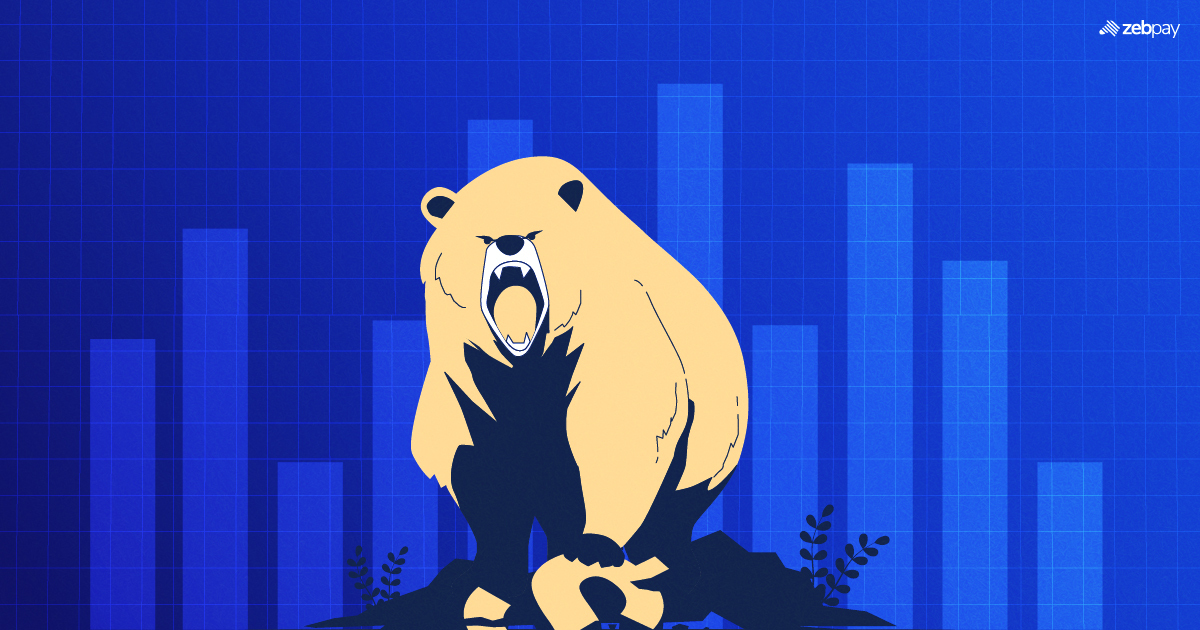28th December 2022 | ZebPay Trade-Desk
After two years of a Quantitative Easing-fueled rise, global markets have encountered significant headwinds. We are currently in a bear market. Everything appears to be in a downtrend, not just stocks and crypto. Bitcoin is down 70% from its peak, and stock indices are down more than 20%. In this time of low confidence, let’s take a deep dive into the worst bear markets in history and see how the markets recovered from them.
The 1929 Great Depression
The 1929 bear market, caused by the Great Depression, is the largest in history. The September 1929 stock market crash was the first domino to fall which caused several banks to default triggering a chain reaction of collapsing institutions. All of this increased unemployment to 25% and drove the stock market down by more than 85%. It took the Second World War to repair the damage, as the market did not fully recover until January 1945.
The 2007 Financial Crisis
Before its demise, Lehman Brothers was the world’s fourth-largest investment bank. Leading up to one of the largest housing market bubbles in recent history, the company underwrote over $80 billion in mortgage-backed securities. Due to the lack of background checks, people with the worst credit were able to obtain massive mortgages that they could never afford.
When home prices fell, many of these people defaulted on their mortgages — the same mortgages that backed investment banks’ portfolios, such as Lehman Brothers. It didn’t take long for Lehman Brothers to fail, bringing the entire economy down with it. During the next 18 months, the S&P 500 lost nearly half of its value, while most major economies entered deep recessions.
The Dot com Bubble
Another crash that many people remember is the Dot-com Bubble. Investor interest in technology stocks was at an all-time high in the years leading up to the turn of the decade. The mood was so upbeat that people would buy anything in that market because of peer pressure. This worked well for many people until the internet-fueled Nasdaq came to a halt. The S&P 500 lost more than half of its value, and many businesses failed.
The Black Monday (1987)
Black Monday is remembered as the Dow Jones’ most violent correction in history. The stock market lost a quarter of its value in a single day in October 1987. That day became known as Black Monday. It took another two months for the market to find its bottom, causing the value to fall another 11%. For comparison, Black Monday was twice as intense (in terms of percentage) as the reddest day of the covid crash in 2020.
The stock market crash of 1973-1974
Economists have had good expectations since 1973. Markets have experienced significant growth since then and no one expected this to change any time soon. Days before the crash, Time Magazine wrote about its vision for another year of stable performance. Meanwhile, world economies slipped into recession. In just two years, the U.S. economy’s GDP growth rate fell to negative -2.1% from a positive 7.1%, while inflation rose to 12%. Similar effects were felt around the world, leading to a slow decline in many major indices.
The decline lasted nearly 700 days and halved the value of the S&P 500 again. The United States entered a period of stagflation, with inflation reaching 25%. It wasn’t until 1993 that the US stock markets reached a new all-time high.
The Cyprus Crash (2000-2013)
This bear market takes the trophy for the largest percentage losses in history. After peaking in November 1999, the Cyprus stock market entered the most brutal and devastating bear market in world history. Over the next five years, it lost 92% of its value.
Read more: Tips For Bear Market
As if that wasn’t enough, the market endured a multi-year rebound only to correct another 86%. It bottomed out in October 2013. Since the 1999 peak, the market has lost a whopping 99.2% of its value. Think about it: a 99.2% correction means the market has lost another 90% of its value after already losing 90%.
Third Bitcoin Bear Market (2017)
We included this one on our list because it’s probably the most familiar to many of you. After Bitcoin surged to $20,000, it lost more than 60% of its value in just a few months. After facing many hurdles, Bitcoin bottomed at $3,200 in December 2018.
Read more: Bitcoin price prediction
Shortest Bear Market Ever (2020)
The recent bear market caused by the outbreak of the coronavirus was the shortest bear market ever. After the stock market crash in early March, it took just six months for the stock market to recoup its losses. As central banks around the world resorted to quantitative easing, this bear market marked the beginning of a steep bull run that ended after a few months. The end of this bull market led to the economic winter we are in today.

